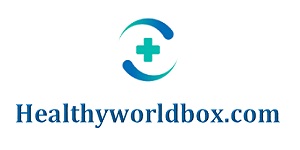Healthcare Data Breaches: Insights and Implications

The information age, with its convenience and advantages, is riddled with risks, of which data breaches are among the significant concerns. A data breach happens when confidential or protected information receives external exposure in an unauthorized fashion by third parties having malicious intent.
Data breaches heavily impact the users’ trust and their relationship with corporations. As for corporations, it hampers their reputation and market standing; in short, their goodwill. These are reasons why companies have been contesting breach prevention solutions.
Healthcare Sector and Data Breaches
Like any industry, healthcare, too, has been a victim of data breaches over the past few years. It gets regarded among the most prone sectors to unauthorized access to consumer information. According to the HIPAA Journal, about 3705 data breaches of 500 or more records got reported to the HHS Office for Civil Rights. Also, Anthem Inc posits that almost 78.8 million people’s confidential information got compromised in 2015. The stolen data included names, social security numbers, home addresses and dates of birth.
An HHS data analysis on hospital breaches by Bitglass has a big reveal. In 2020, over 500 data breaches got reported for hacking and IT incidents at the top risk factor, spanning 67.3 percent of all cases. The other major reported factors included loss, theft or unauthorized disclosure.
According to a survey by IBM, only 23 percent of hospitals have security automation tools. A HIMSS survey reported that 6 percent or less IT budget gets dedicated to resolving cybersecurity. Check this – minishortner
Instances and Case Examples
Among the most significant healthcare data breaches in 2020 included Trinity Health. Nealy 3.3 million individuals’ details got accessed through ransomware attacks. In 2021, Trinity faced another attack, compromising the health data of over 5,50,000 patients. MEDNAX Services faced a data breach of over 1,200,000 individuals, and the Inova Health System breach led to the data exposure of more than 1,000,000 users.
According to healthcare data insights, about 328,090,000 individuals were affected by data breaches between 2015 and 2021.
Consequences and Costs of Healthcare breaches
One might wonder about the consequences of healthcare data breaches. Here’s what is worrisome. As one of the primary targets for hackers, healthcare breaches render access to users’ personal, financial and medical information. Such data can get used in several ways. For instance, it can get sold to third parties or competitors for immediate access. Also, personal information can get used for blackmailing customers or orchestrating criminal activities through impersonation. Other possibilities can involve sensitive medical information related to STDs or terminal illnesses to embarrass the user or patient. In many cases, hackers can also use credit card information to purchase drugs or fill prescriptions.
According to Ponemon, a research center, the average cost per healthcare breach increased from $429 to $499 from 2019 to 2020, respectively. Typically, healthcare firms take almost 96 days to identify and 236 dates to recover from the breach. It gets regarded as the longest time to recover among several industries.
In avoiding the precipitation of such high-level crimes, breach prevention is the need of the hour.
Avoiding Healthcare Breaches
In light of the severity of breaches, there are several ways that hospitals and healthcare centers can deploy to minimize and even mitigate healthcare breaches.
Note that security is only as strong as its weakest link or loose end. So, avoidance is the key! Each interaction with a system can be a potential threat.
Below are a few best practices that can help avoid data breaches:
- Software should get patched and updated as soon as the latest options become available
- Sensitive and confidential data can get protected through high-grade encryption
- Devices should get upgraded when software is no longer deemed supportive by the manufacturer or developer
- BYOD security policies – All devices can get mandated to use business-grade VPN service and antivirus protection
- Mobile Device Management (MDM), Endpoint Detection and Response (EDR) – these can help mitigate and avoid security risks
- Consulting with data centers for remote data storage. In this way, the onus for data security and management lies with data centers
- Enforcing strong credentials and multi-factor authentication – This can help encourage using better user cybersecurity practices. Users can also get encouraged to start using a password manager
- Educating and training employees in deploying best industry practices and ways of mitigating socially-engineered attacks
- Protected Harbor – It ensures HIPAA compliance and secures PHIs and EHRs. This one builds a custom protocol for the corporation from the ground up to safeguard the data center in the healthcare and medical industries against attacks, outages and downtime, among others.
Parting Words
The new wave of technology is witnessing the use of Artificial Intelligence (AI), Machine Learning (ML) and multi-level authentication protocols, among others. Nonetheless, the scare of a data breach is severe and inevitable, and resources are devoted to reducing the impact and scale of data breaches.




